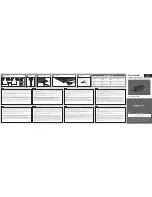
199
If Something Goes Wrong
Develop good computing habits
1
Click
Start
,
All Programs
,
Accessories
,
System Tools
, and
then
System Restore
.
2
Click
Next
.
3
A list of previously created Restore Points displays, showing
the timestamp and description of each Restore Point.
This list may contain Restore Points that you did not create. Restore
Points labeled System Checkpoint were automatically created by the
Windows
®
operating system. Other Restore Points may have been
created automatically by applications when they were installed.
4
Select the Restore Point you want to use, and then click
Next
.
The utility displays the timestamp and description of the
selected Restore Point.
5
Verify that the Restore Point you selected is the correct one. If
it is not, click
Back
to return to step
6
Close all programs and save all open files.
7
Click
Finish
, and then
Yes
to begin the system restore.
8
Your Windows
®
operating system configuration will now be
restored to the state it was in when the chosen Restore Point
was created, and then the computer will be automatically
restarted.
Backing up your data or your entire computer with the
Windows
®
operating system
The most valuable component of your computer system is the data
you create and store on its hard drive. Since problems with either
hardware or software can make the data inaccessible or even
destroy it, the next most valuable component of your computer
system may be a recent backup of your data.
Fortunately, the Windows
®
operating system offers a convenient
way to back up your computer or just your important files to CDs,
DVDs, or hard drives. An external hard drive is recommended in
case the internal hard drive fails. No additional software is required.
Most of the CD and DVD drives built into recent Toshiba portable
computer models can write to (or ‘burn’) as well as read from CDs.
External CD and DVD writers are also widely available.
Follow these steps to back up your computer or files to CDs, DVDs,
or a hard drive:
NOTE
















































